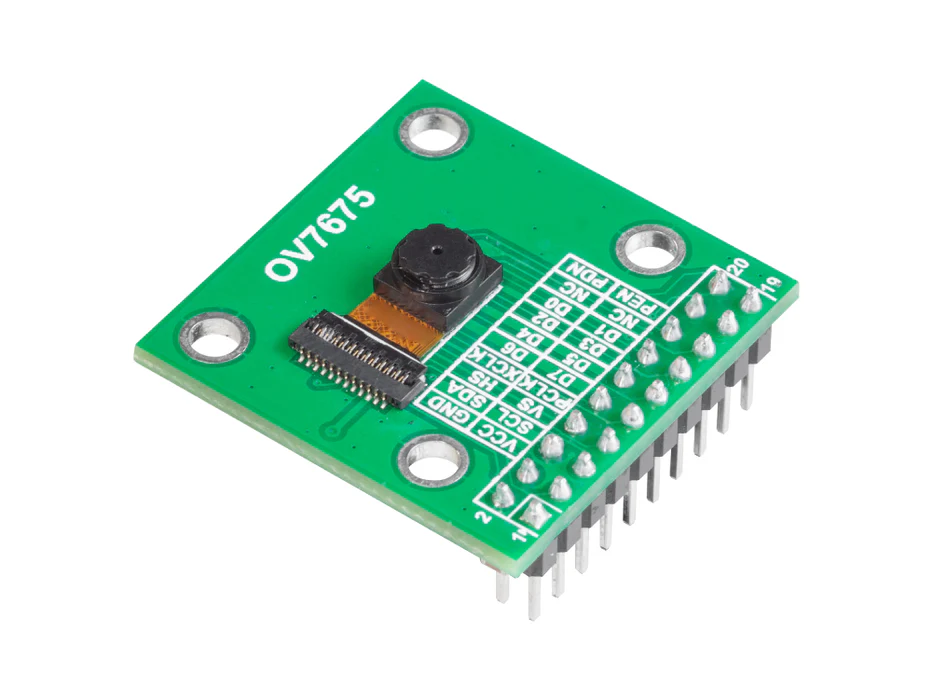
Arducam 0.3MP OV7675 20-pin DVP Camera Module for Arduino GIGA R1 WiFi
Simple interface, compatibility with Arduino libraries, and seamless integration with the Arduino Giga board.
Overview
The Arducam OV7675 camera provides support for resolutions of up to 640x480 pixels, ensuring the capture of clear and sharp images. Its versatile range of features enhances the functionality of your projects. Whether you're developing a home automation system, a smart monitoring device, or any other Arduino-based project that requires visual input, the Arducam OV7675 camera offers a reliable and flexible solution. With its user-friendly interface, superior image quality, and seamless compatibility with the Arduino Giga board, it is an ideal choice for various applications where visual data is crucial.
Tech specs
| Image Sensor | OV7675 |
|---|---|
| Active Array Pixels | 640x480 |
| Pixel Size | 2.5µmx2.5µm |
| S/N Ratio | 38 dB |
| Dynamic Range | 71 dB |
| Interface | 20-pin DVP |
| Shutter Type | Electronic Rolling Shutter |
| Color Filter Array | Quad-Bayer RGB |
| Output Format | RAW/YUV/RGB |
| Resolution&Frame Rate | 640x480/320x240/160x120@15fps |
| Lens Optical Size | 1/9 Inch |
| EFL | 1.75mm |
| F.NO | 2.8 |
| Field of View Angle | 63.9°(D) |
| Lens Distortion | <1.0% |
| Focus Distance | 0.12M - ∞(AT=0.23M) |
| Power Supply | AVDD: 2.7VA ~ 3.0V DOVDD: 1.7V ~ 3.0V DVDD: 1.5V |
| Operation Temp. | -30° C to 70° C |
| Board Size | 30.5mm x 30.5mm |
Get Inspired
Easily monitorize your garden's environment with simple components.

Greenhouses are excellent ways to grow plants due to their compact nature and the fact that they can absorb and store the sun’s light as heat to keep their internal temperature higher than outside. But when it comes to adding ventilation for cooling things down, decreasing the humidity, or simply to avoid rain, most non-commercial ones still rely on someone to manually open or close the windows. This need for automation is what drove Michael Bernhard to create his own greenhouse climate regulation system. This project relies on a Nano Every to read the ambient temperature/humidity as well as control up to six motorized windows via three L298N dual H-bridge drivers. The Nano receives commands and other data over WiFi from an accompanying ESP8266 board for wireless remote control with a mobile phone. Each of these components and their connectors were added to a custom PCB and placed within a simple wooden enclosure to keep moisture out. An LCD at the top shows pertinent information such as the time, temperature, and humidity. The aforementioned WiFi control scheme not only allows for remote control of the windows, but also for the visualization of historical sensors data on a graph. Safety information, including errors and stored EEPROM data, can be viewed on the web application, too. To see more about this project, you can read Bernhard's write-up here on Hackster.io.











